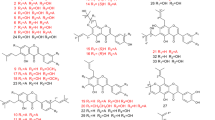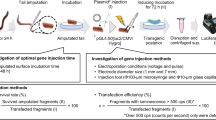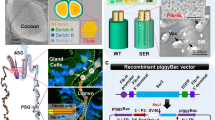Abstract
FIVE years ago we found1 that hydroxylamine causes the formation of virus protein in the body of the silkworm without virus infection. As it has been established, particularly by Virtanen2, that hydroxylamine and oxaloacetic acid oxime appear as intermediate products of nitrogen fixation by bacteria, I assumed that these compounds must be widely distributed in animals and plants and often act as general agents which provoke the outbreak of virus diseases. In recent experiments we have shown3 that various animal and plant tissues contain oximes and the oxime-content changes with the growth. In this communication I propose to describe briefly the results of experiments in which silkworms were fed with nitrites.
This is a preview of subscription content, access via your institution
Access options
Subscribe to this journal
Receive 51 print issues and online access
$199.00 per year
only $3.90 per issue
Buy this article
- Purchase on Springer Link
- Instant access to full article PDF
Prices may be subject to local taxes which are calculated during checkout
Similar content being viewed by others
References
Yamafuji, K., and Shirozu, Y., Biochem. Z., 317, 94 (1944). Yamafuji, K., and Cho, T., ibid., 318, 915 (1947).
Virtanen, A. I., and Laine, B., Biochem. J., 33, 412 (1939).
Yamafuji, K., Kondo, H., and Omura, H. (unpublished).
Author information
Authors and Affiliations
Rights and permissions
About this article
Cite this article
YAMAFUJI, K. Conversion of Nitrites into Oximes in Silkworms and its Relation to the Experimental Production of Virus Disease. Nature 165, 651–652 (1950). https://doi.org/10.1038/165651a0
Issue Date:
DOI: https://doi.org/10.1038/165651a0
This article is cited by
Comments
By submitting a comment you agree to abide by our Terms and Community Guidelines. If you find something abusive or that does not comply with our terms or guidelines please flag it as inappropriate.



